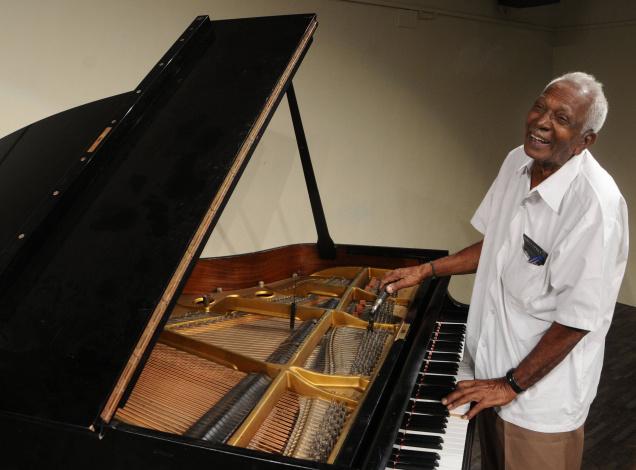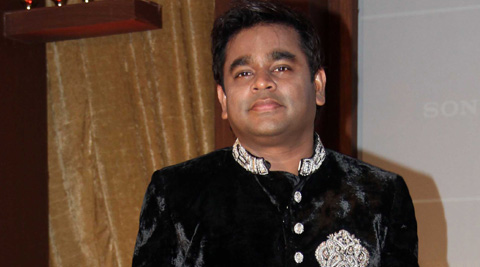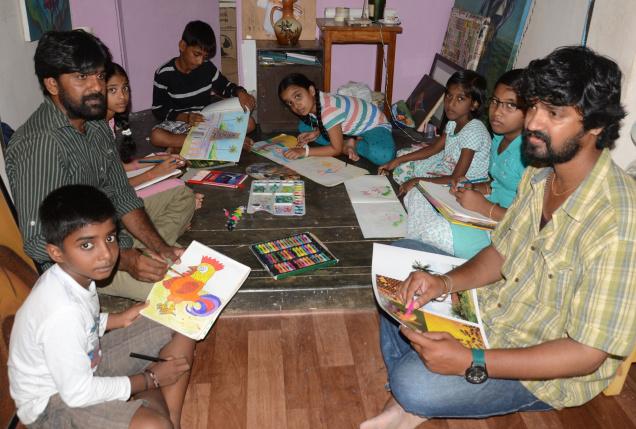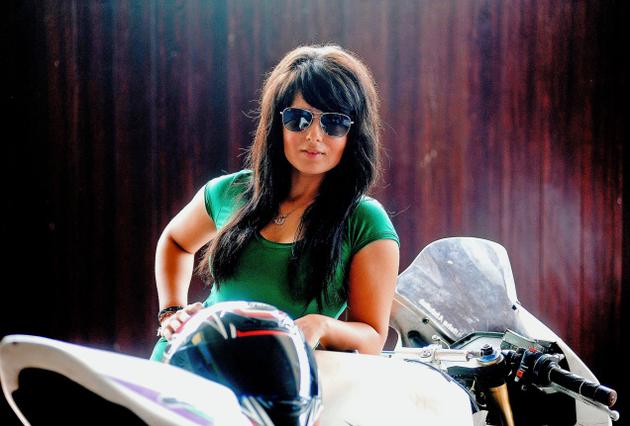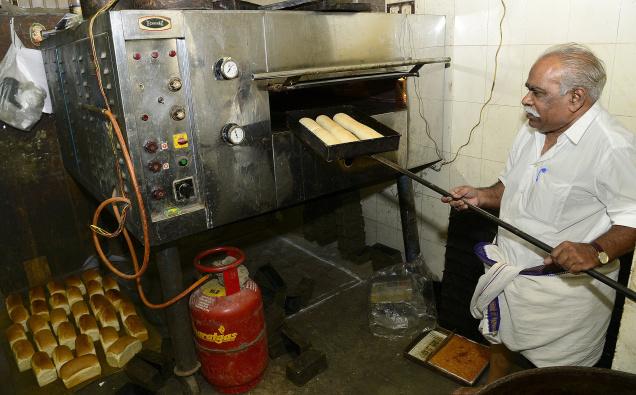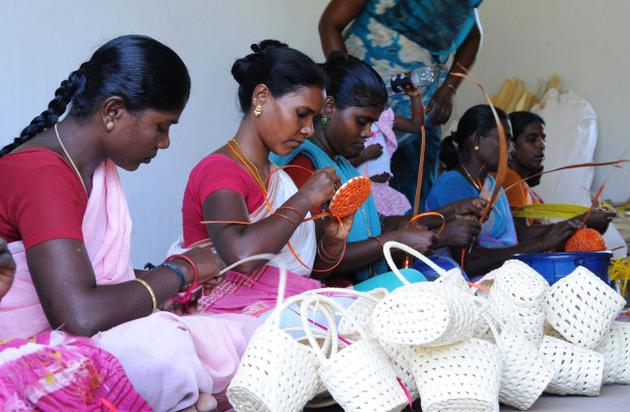
The women of Nedumaram Village strike an example of self-sustenance by making beautiful art pieces out of palm leaves for a living
On a scorching Sunday afternoon, a group of women from Nedumaram village huddle inside the Government complex. They assemble to make artefacts out of palm leaves. It is a joy to watch their fingers move in synchronisation through the bunch of thin palm leaf strands. And in no time the strands get perfectly entwined and interwoven into various shapes. They take a break and beam at each other’s creativity. Soon the silence is replaced by banter and giggles. Their master Tamilarasi appears strict and instructs them to concentrate on their work. The ladies return to the strands of palm leaves in their hands. Like this they spend hours making beautiful baskets, trays, fashionable beer-bottle holders, doom sets, chocolate boxes and puja plates.
These women are the agents of change in the drought-prone hamlet in Sivaganga district. The turning point came when an NGO in collaboration with the National Bank for Agriculture and Rural Development (NABARD) conducted art classes for them three decades ago.

“I was 10 years old then and six of us attended the course for six months. A foreigner lady came from Kanyakumari to teach us palm-leaf art,” recalls 40-year-old Tamilarasi. She now teaches the art to the entire village. “We were taught only the basic baskets,” she says, “We have invented so many other products now.”
What started with a small group has evolved into a women’s self-sustenance movement in Nedumaram. Today, there are 100-odd women, a mix of young mothers, older women and school-dropouts all from poor families and with a sorrowful saga to narrate. Their lives are much in contrast to the colourful wares they make. Most of them own small lands but curse the rain gods for pushing them to poverty. Some complain of their abusive alcoholic husbands, some worry about the future of their kids. If there is anything that gives them moments of happiness and helps them to earn, it is the palm leaf work.
“We work from home and on an average earn around Rs.100 to 120 per day,” says Karpagavalli, who lost her husband two decades ago. “I was wondering how I would bring up my two children. This work provided me a stable livelihood.”
Says Anandhi, who has been doing palm-leaf art for 20 years: “Only if it rains, we go for agriculture work. Otherwise we are engaged in palm-leaf work round the year. We earn more than a daily wager and each of us maintains a savings account in banks. We feel empowered.”
“Making these art pieces gives peace of mind and we feel happy about being able to make such beautiful things,” says Meena who along with Tamilarasi has showcased the palm wares at expos across the country.
“Three years ago, we took part in the National crafts expo at Delhi and we did business worth Rs.6000 on the first day itself. We made the art pieces during the two-day train journey.”
The women source the bundles of dried palm leaves from Ramanathapuram. One leaf weighing about a kilogram costs Rs.20. The leaves are laid out in the sun to dry for two days, after which they are cut to required measurements.
“The Ramanathapuram palm leaves are the best. Once dried, they turn white in colour and hard in texture,” Tamilarasi explains the process of palm art. The dried leaves are cut into strands varying in thickness and length using a small machine. Colour powders dissolved in boiling water are used for colouring the strands. “We can make any required colour by mixing the common five colours – red, yellow, blue, green and black,” says Tamilarasi.
The women find the method of weaving also simple. They use the single knot technique, which is repeated in different permutations and combinations to get the circular, square and rectangular shapes. Sometimes, the thick palm strands are used as the base for weaving with the thinner strands on them.
Palm leaf art made in Nedumaram reaches customers across the globe. The Khadi Gramodyog Bhavan is one of the major buyers. They also get orders from Hotels and resorts from nearby Kanadukathan and Karaikudi, or from big cities like Chennai and Bangalore and many foreign tourists. A chunk of the orders come through South Indian Producers Association, in which the group has been enrolled.
“Since the products are eco-friendly, even organic shops place orders. There are some export agencies that buy artefacts from the women of Nedumaram,” says Michael, Joint Director of Tirupattur Rural Uplift Project Association, an NGO functioning in Sirukoodalpatti village, which helps the women in pricing and marketing their wares. “We educate the women on how to price the products taking into account the raw-material cost, transportation and labour cost.”
“We have scripted a successful story so far. But now there is a shortfall in the supply of palm leaves caused by failure of rains and rampant felling of palm trees in Ramanathapuram district,” points out Tamilarasi. As a result, the price has gone up. “We only hope the remaining palm trees are protected and a lot more get planted,” she says.
source: http://www.thehindu.com / The Hindu / Home> Features> MetroPlus / by A. Shrikumar / Madurai – September 17th, 2014
